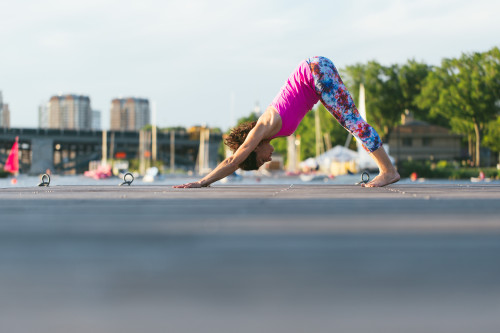
I’m a pretty passionate yoga teacher and I’ve found that there’s really no other kind. To do what we do, especially if you do it as your primary source of income, you usually are pretty passionate about teaching yoga. It’s one of those things that’s not really a choice; it’s your dharma (what you were meant to do). So, as a result I often find myself in engaging, spirited conversations about yoga with others, and often with people that do not teach yoga. I love those kinds of conversations because I’ve found there are many misunderstandings about yoga out there ( “You need to be flexible to do yoga” or “Yoga is only great for stretching not for building muscle”) and I like to share as much as possible from my own experience and then let people make up their own minds.
I also will add that teachers tend to teach yoga through the lens of their own experience. The same pose, Warrior 1, will sound quite different when taught from teacher to teacher. Some might focus more on the anatomy of the pose, like me, while some might focus on the energetic aspect of the pose or speak to the mind. Students gravitate to what they like and I generally say to people there is no “right or wrong” but it’s always interesting to look at things from different perspectives.
I was having a conversation recently about yoga being a “practice that teaches people how to breathe.” This was not my statement; it was someone else’s and in fact, we know that yoga is indeed a practice of breathing. Breathing, breathing awareness, focusing on the breath; of course, this is all part of the practice. How many times has the teacher said, “follow the breath” or “watch your breath,” or “bring more awareness to your breathing.”
But as I was having this discussion and having the teaching experience of teaching a number of classes with beginners this past week, it got me thinking: How helpful is it to teach to the breath if structurally the posture is unsound? What good does it do to talk about breathing to students when you can see that they are struggling in a pose? First of all, you know they’re breathing. Sure, maybe their not doing ” yoga breathing” but they’re breathing. Secondly, they’re most likely over-efforting in their breathing because the structure of the pose is unsound. Think of a beginner student in Downward Dog. They don’t understand the leverage of the pose is “up and back,” they’re de-conditioned and being upside down on their hands is exhausting. If, as a teacher, I speak to their breath, how helpful is that? Not very.
However, if I speak to the structure, if I use very clear instruction to suggest that they “push the floor away,” “bend the knees a little as they press the hips up,” “move their feet in a little closer to their hands, ” and any other PHYSICAL cue that can help them come into a more structurally sound shape, then by default, their breathing will come with greater ease. They will naturally be able to breathe with more steadiness and hopefully, greater awareness. Over time, if teaching is approached in this way, students will develop a state of body and mind so that you can begin to teach to the breath. Keep in mind too that this shift does not happen over several weeks; it can happen in the same class but one thing has to be in place: that you slow down your teaching.
I have drastically slowed down my teaching over the years. What used to be a “show up and flow” class is now a slower, more deliberate sequence with lots of anatomically based cues and time for students to hold each pose and experience what I hope and do see as greater stability as well as stretch. I have several students regularly say to me, “Wow, that was much slower but much harder!” Yes! This is true! When we flow fast, it tends to be messy and sloppy. When we move slowly, it tends to be more structurally sound (if the right cues are presented).
Keep in mind that this is teaching through my own lens, which I never say is the “right” way to teach. The best approach to teaching is to teach from what you know, from what makes sense in your body and to take seriously your training and ongoing education so you are always learning yourself.

Hi Karen.
Enjoyed your article. I have also found that I have plans to teach a class, look at my students and realize I need to slow down and break apart the sequence pose by pose.
Glad you liked it!